Our partner in Nepal is an organization called the Himalayan Tribal Development Council. It is run by a Lutheran pastor named Raju Bhitrakoti. Raju was my first contact in Nepal and he is the person who introduced me to the Chepong people in the village of Kaule.
The Chepong people are a marginalized indigenous group and are at the lowest rung of Nepal’s caste-based society. This is partially because they live at high altitudes, isolated from urban society. It takes at least two hours by grueling dirt road to get to Kaule from the lowland city of Chitwan. Driving there in a tuk-tuk feels like you are on the Indiana Jones ride at Disneyland, except instead of it being a 3-minute ride, it is 2-3 hours in which you are always skirting the side of a steep Himalayan cliff. It is kidney-jarring and hair-raising.
The Chepong are typically hunter-gatherers. However, in modern times they have settled into high mountain villages like Kaule where they live on the sides of cliffs and farm-terraced plots of soil that are too rocky to support consistently healthy crops. One of their biggest problems in development is that to take their produce to market in the city requires a hike down the mountain of 6 to 8 hours lugging an extremely heavy burden which they carry in burlap sacks slung over their backs. The Chepong of Kaule does not have cars. One or two have a 125 cc (small) motorcycle.
When they get to the city and go to sell in the market, their produce cannot compete with the superior quality produce grown in the fertile soil of the lowlands. If they are lucky, they will hike back up the mountain with a dollar or two in their pockets.
Poor soil and limited transportation are big problems. A compounding complication is that one hard rain wipes out the dirt road and the trails leading from Chitwan to the village. May starts monsoon season, during which it rains hard all day, every day for four months. No one can get to Kaule from the city and the villagers can’t get to the city!
Many Chepong families have turned to goat herding as a way to earn a living and feed their families. Goat meat, along with chicken, is the main source of protein in the Chepong diet. The droppings of the goats can be used as fertilizer and goats can be sold for a profit. It made a ton of sense to us to help the people of Kaule build up their goat production and thereby advance their development.
Last year, we did a survey of the families in Kaule. At that time, 250 Chepong families were living in the village. 200 of those families had goats, but 50 were too poor to afford even one goat. The families without a goat were mainly headed by women without husbands, or women whose husbands had gone abroad to find work. We believed it would be a major step forward in the development of the community if we could bridge the gap and ensure that all 250 families had goats.
The first thing we did was form a village “Goat Committee” to be headed by the leading village elder, Yogendra. We worked with the Goat Committee to devise protocols for the goat distribution and progress of the project. Some of the protocols we came up with:
Each family had to build a covered stall to protect the goats from rain.
Each of the goat-less families would then receive a female goat.
The Goat Committee would receive two male goats to be contained, controlled, and cared for until the females were ready to mate.
Each recipient family would agree not to eat or sell their goat for at least three years.
Each recipient family would agree to return the firstborn baby to the committee for distribution to any other recipient unlucky enough to have a goat die before giving them any offspring.
In retrospect, mistakes were made at the outset. For example, the goats typical of that area are called Khari goats. They are hardy and accustomed to the high elevation and crazy weather of the Himalayas. However, Khari goats are smaller and their meat is tougher than the goats reared at lower elevations. The Goat Committee determined that they wanted to try the lowland goats instead of the Khari variety common to the area. In retrospect, this was not a great decision.
John Hoobs and I were here last year for the distribution. One afternoon, we loaded the 50 females and two males into an open-bed truck. Well, when the truck was halfway up the mountain, there was an unexpected and torrential rainstorm. Several of the goats caught pneumonia and a few died within days of being distributed to the villagers.
Fortunately, by the protocols we set up, it was understood that the owner of a goat that died would have to wait until the Goat Committee had one to replace the one that was lost. There have been no demands that GCA purchase replacements for the few goats that died, a very good sign. The families that suffered a loss in those early days have been patient to wait.
It has now been 7 months since the distribution of the goats and there are some incredible developments to report. First, and foremost, none of the recipients has eaten or sold their goat. They are invested in the program and follow the rules set up by their fellow villagers through the Goat Committee. In addition, babies are starting to be born, fifteen to be exact. Another 10 of the females are pregnant and others are showing signs of being ready to mate. The project is starting to achieve liftoff!
I had a long meeting with Yogendra and the Goat Committee while I was in Kaule, the focus of which was to determine how the project could be strengthened. We concluded that it would be wise to introduce some Khari female goats into the population of lowland goats in hopes of creating a hybrid goat that is not only large like the lowland goats but also very hearty like the Kharis.
We need to do this to make sure that we don’t have more deaths during future monsoons. I am in the process of figuring out the contours of that follow-up project and will seek to fund it as soon as I know what we need.
On the whole, I am encouraged by the direction of the project. There is work to be done, but the fact that the rate of reproduction is accelerating gives me great hope that we are on the right track. Thank you to each and every one of you who has donated towards or prayed for the success of the Kaule Goat Project.
If you have never donated to Global Care Alliance, today is a great day to join our great adventure of helping underserved people lift themselves out of poverty.

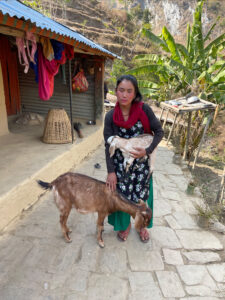
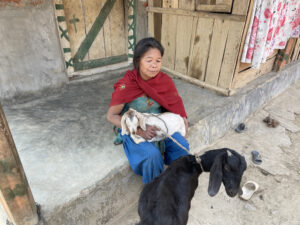

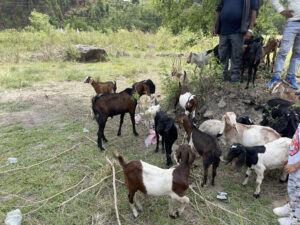
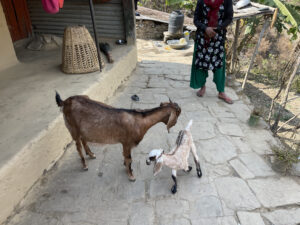
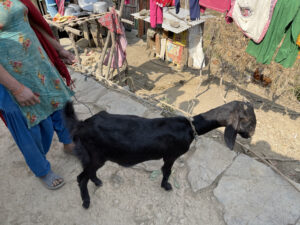

Comments are closed